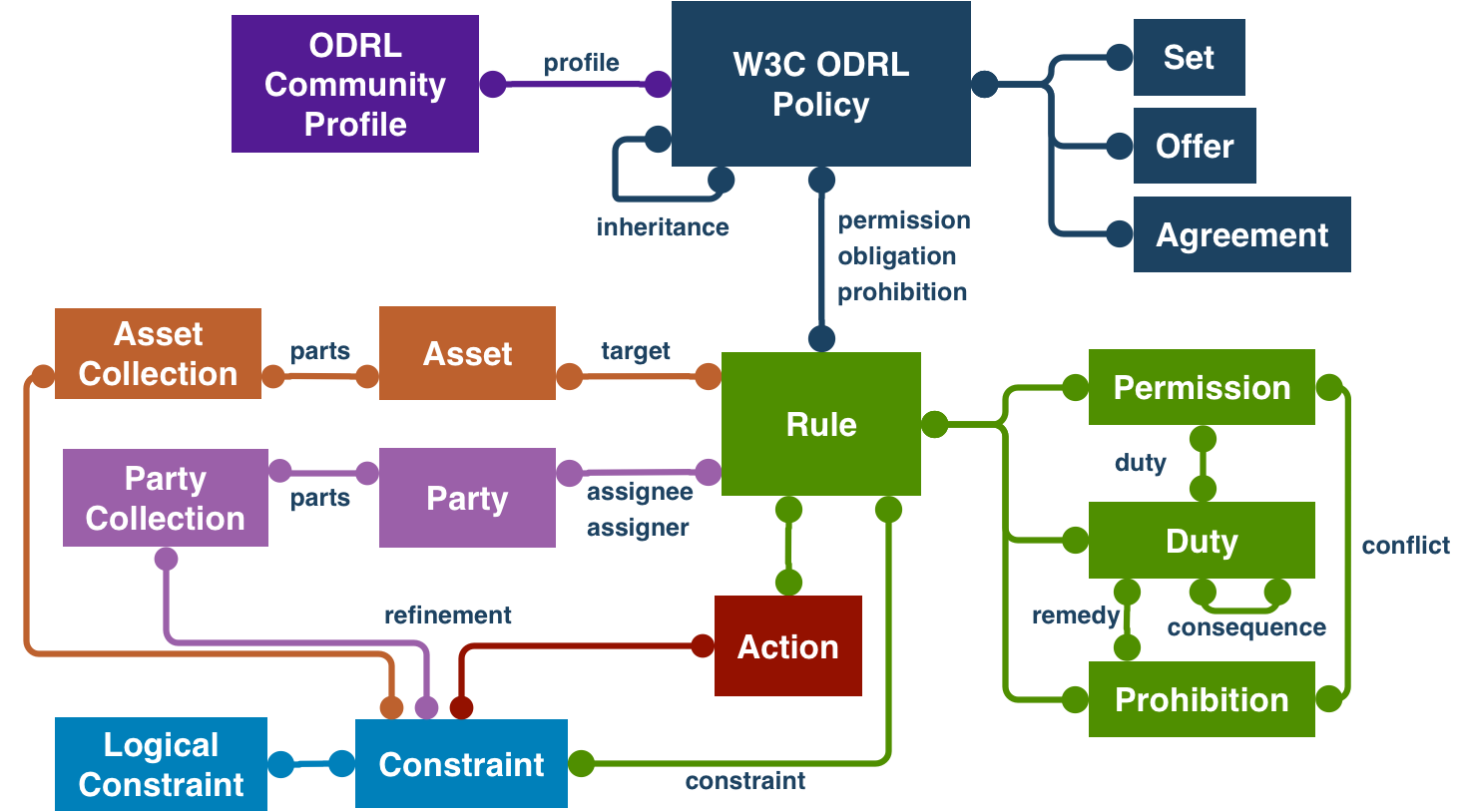News
ODRL 2.2 is now a W3C Recommendation
15 February 2018 | Archive
 The Permissions & Obligations Expression Working Group has just published a Recommendation for two documents, namely:
The Permissions & Obligations Expression Working Group has just published a Recommendation for two documents, namely:
-
ODRL Information Model—The Open Digital Rights Language (ODRL) is a policy expression language that provides a flexible and interoperable information model, vocabulary, and encoding mechanisms for representing statements about the usage of content and services. The ODRL Information Model describes the underlying concepts, entities, and relationships that form the foundational basis for the semantics of the ODRL policies.
Policies are used to represent permitted and prohibited actions over a certain asset, as well as the obligations required to be met by stakeholders. In addition, policies may be limited by constraints (e.g., temporal or spatial constraints) and duties (e.g., payments) may be imposed on permissions. - ODRL Vocabulary & Expression—The ODRL Vocabulary and Expression describes the terms used in ODRL policies and how to encode them.
Please read more in the W3C Blog about ODRL, its story and its future, ODRL: A Path Well Travelled, a post authored by the working group co-chair, Renato Iannella, Monegraph.
WebAssembly First Public Working Drafts
15 February 2018 | Archive
The WebAssembly Working Group has published three First Public Working Drafts:
- WebAssembly Core Specification describes version 1.0 of the core WebAssembly standard, a safe, portable, low-level code format designed for efficient execution and compact representation.
- WebAssembly JavaScript Interface provides an explicit JavaScript API for interacting with WebAssembly.
- WebAssembly Web API describes the integration of WebAssembly with the broader web platform.
WebAssembly is a virtual instruction set architecture with many use cases and can be embedded in many different environments, that enables high performance applications on the Web. The design goals of WebAssembly are fast, safe, and portable semantics; efficient and portable representation. WebAssembly code is also intended to be easy to inspect and debug, especially in environments like web browsers.
W3C Invites Implementations of the Vehicle Information Service Specification
13 February 2018 | Archive
The Automotive Working Group invites implementations of the Vehicle Information Service Specification Candidate Recommendation. This specification defines a WebSocket based API for a Vehicle Information Service (VIS) to enable client applications to get, set, subscribe and unsubscribe to vehicle signals and data attributes.
The purpose of the specification is to promote a Server API that enables application development in a consistent manner across participating automotive manufacturers.
First Public Working Draft: Personalization Semantics Content Module 1.0
13 February 2018 | Archive
The Accessible Rich Internet Applications (ARIA) Working Group has published a First Public Working Draft of Personalization Semantics Content Module 1.0. This document provides a vocabulary of terms that can be used to enhance web content with information about controls, symbols, and user interface elements. User agents use these semantics to augment or adapt content to the user scenario. This helps the user use and understand the content, and supports simplification and management of distractions.
Personalization Semantics Content Module is a part of Personalization Semantics, which is introduced in the Personalization Semantics Explainer 1.0.
